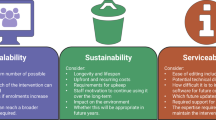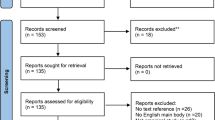Abstract
At a time when higher education is being pushed not only to increase efficiencies to provide greater value and to innovate to meet new global challenges, processes of accountability and accreditation to demonstrate quality may be leading to conformance and a one-size-fitsall model of what institutions and programs should be. Further, in the public marketplace, rankings are increasingly viewed as key quality indicators not only for students and their parents in making educational choices, but to administrators who perceive these as important for their institutions’ futures and funding. The influence of markets and accountability policy as increasingly major drivers of change impacting the field of educational technology are reviewed from historical and current perspectives. Leadership roles that the Association for Educational Communications and Technology (AECT) and its members might develop in response to these expanding pressures are proposed which may lead to higher visibility for the field, greater policy advocacy, and new research agendas. In particular, the issues of quality assessments and visibility are viewed for ensuring higher education programs in the educational technology field continue to provide excellence and value to future professionals.
Similar content being viewed by others
References
Altbach, P. G., Berdahl, R. O., & Gumport, P. J. (1996). Higher education in American society. New York, NY: Prometheus Books.
Altbach, P. G., Berdahl, R. O., & Gumport, P. J. (Eds.). (2011). American higher education in the twenty-first century: Social, political, and economic challenges. Baltimore, MD: Johns Hopkins University Press.
Altbach, P. G., Reisberg, L., & Rumbley, L. (2010). Trends in global higher education: Tracking an academic revolution. Paris, FR: UNESCO & Sense Publishers.
Barber, M., Donnelly, K., Rizvi, S., & Summers, L. (2013). An avalanche is coming: Higher education and the revolution ahead. London, UK: Institute for Public Policy Research. Retrieved from http://www.ippr.org/publication/55/10432/anavalanche-is-coming-higher-educationand-the-revolution-ahead
Bardo, J. W. (2009). The impact of the changing climate for accreditation on the individual college or university: Five trends and their implications. New Directions for Higher Education, 2009(145), 47–58. doi: 10.1002/he.334
Bastedo, M., & Bowman, N. (2010). U.S. News & World Report college rankings: Modeling institutional effects on organizational reputation. American Journal of Education, 116(2), 163–183. doi: 10.1086/649437
Bates, T., & Sangra, A. (2011). Managing technology in higher education: Strategies for transforming teaching and learning. San Francisco, CA: Jossey-Bass.
Bowen, W. G. (2012). The “cost disease” in higher education: Is technology the answer? The Tanner Lectures, Stanford University. New York, NY: ITHAKA. Retrieved from http://www.ithaka.org/sites/default/files/files/ITHAKA-The-CostDiseaseinHigherEducation.pdf
Bowman, N., & Bastedo, M. (2009). Getting on the front page: Organizational reputation, status signals, and the impact of U.S. News and World Report on student decisions. Research in Higher Education, 50(5), 415–436. doi: 10.1007/s11162-009-9129-8
Brittingham, B. (2009). Accreditation in the United States: How did we get to where we are? New Directions for Higher Education, 2009(145), 7–27. doi: 10.1002/he.331
Ceruzzi, P. E. (2005). Moore’s Law and technological determinism: Reflections on the history of technology. Technology and Culture 46(3), 584–593. doi: 10.1353/tech.2005.0116
Christensen, C. M., & Eyring, H. J. (2011). The innovative university: Changing the DNA of higher education from the inside out. Forum for the Future of Higher Education, 2012, 47–53. Retrieved from http://net.educause.edu/ir/library/pdf/ff1207s.pdf
Cohen, A. M. (1998). The shaping of American higher education: Emergence and growth of the contemporary system. San Francisco, CA: Jossey-Bass Publishers.
Council for Higher Education Accreditation. (2012). 2012–2013 Directory of CHEARecognized Organizations. Washington, DC: CHEA. Retrieved from http://www.chea.org/pdf/2012-2013_Directory_of_CHEA_Recognized_Organizations.pdf
Cuban, L. (2001). Oversold and underused: Computers in the classroom. Cambridge, MA: Harvard University Press.
Dawes, R. M. (1993). Prediction of the future versus an understanding of the past: A basic asymmetry. The American Journal of Psychology, 106(1), 1–24. doi: 10.2307/1422863
DeMillo, R. A. (2011). Abelard to Apple: The fate of American colleges and universities. Cambridge, MA: MIT Press.
Geels, F. W., & Smit, W. A. (2000). Failed technology futures: Pitfalls and lessons from a historical survey. Futures, 32(9–10), 867–885. doi: 10.1016/S0016-3287(00)00036-7
Hansmann, H. (2012). The evolving economic structure of higher education. University of Chicago Law Review, 79(1), 159–183. Retrieved from http://lawreview.uchicago.edu/page/vol-79-issue-1-winter-2011
Hazelkorn, E. (2011). Rankings and the reshaping of higher education: The battle for world-class excellence. New York, NY: Palgrave Macmillan.
Hazelkorn, E. (2012a). The effects of rankings on student choices and institutional selection. In B. W. A. Jongbloed & J. J. Vossensteyn (Eds.), Access and expansion post-massification opportunities and barriers to further growth in higher education participation. London, UK: Routledge, forthcoming.
Hazelkorn, E. (2012b). Everyone wants to be like Harvard – or do they? Cherishing all missions equally. In A. Curaj, P. Scott, L. Vlasceanu & L. Wilson (Eds.), European higher education at the crossroads between the Bologna process and national reforms (pp. 837–862). New York, NY: Springer.
Hazelkorn, E. (2013). How rankings are reshaping higher education. In V. Climent, F. Michavila & Y. M. Ripolles (Eds.), Los rankings univeritarios: Mitos y realidades. Madrid, Spain: Editorial Tecnos.
Hoffman, E. S. (2013). 2012 AECT committee and division reports: Standards Committee. TechTrends, 57(2), 18. doi: 10.1007/s11528-013-0640-6
Josephson, A. (2013). New technology-based models for postsecondary learning: Conceptual frameworks and research agendas: Report of a National Science Foundation-sponsored Computing Research Association Workshop held at MIT on January 9–11, 2013. Washington, DC: Computing Research Association. Retrieved from http://www.cra.org/uploads/documents/resources/rissues/Postseconday_Learning_NSF-CRA_report.pdf
McCluskey, F. B. W. M. L. (2012). The idea of the digital university: Ancient traditions, disruptive technologies and the battle for the soul of higher education. Washington, DC: Westphalia Press.
Murray, F. B. (2012). Six misconceptions about accreditation in higher education: Lessons from teacher education. Change, 44(4), 52–58. doi: 10.1080/00091383.2012.691866
Persichitte, K. A. (2008). Implications for academic programs. In A. Januszewski, M. Molenda & P. Harris (Eds.), Educational technology: A definition with commentary (2nd ed., pp. 327–339). Hillsdale, NJ: Lawrence Erlbaum Associates.
Rushkoff, D. (2013). Present shock: When everything happens now. New York, NY: Current.
Salmi, J. (2009). The challenge of establishing world-class universities. Washington, DC: World Bank.
Sanyal, B. C., & Martin, M. (2007). Quality assurance and the role of accreditation: An overview. In J. Tres & Global University Network for Innovation (Eds.), Higher education in the world 2007: Accreditation for quality assurance: What is at stake? (2nd ed., pp. 3–17). New York, NY: Palgrave Macmillan.
Singh, M. (2010). Quality assurance in higher education: Which pasts to build on, what futures to contemplate? Quality in Higher Education, 16(2), 189–194. doi: 10.1080/13538322.2010.485735
Skolnik, M. L. (2010). Quality assurance in higher education as a political process. Higher Education Management and Policy, 22(1), 67–86. Retrieved from http://www.oecd.org/edu/imhe/50310012.pdf
Tilghman, S. M. (2012). The uses and misuses of accreditation: Speech presented to the Reinvention Center Conference on Nov. 9, 2012. Retrieved April 10, 2013, Retrieved from http://www.princeton.edu/president/speeches/20121109
Author information
Authors and Affiliations
Corresponding author
Rights and permissions
About this article
Cite this article
Hoffman, E.S. Ratings, Quality, and Accreditation: Policy Implications for Educational Communications and Technology Programs in a Digital Age. TECHTRENDS TECH TRENDS 57, 47–54 (2013). https://doi.org/10.1007/s11528-013-0691-8
Published:
Issue Date:
DOI: https://doi.org/10.1007/s11528-013-0691-8




